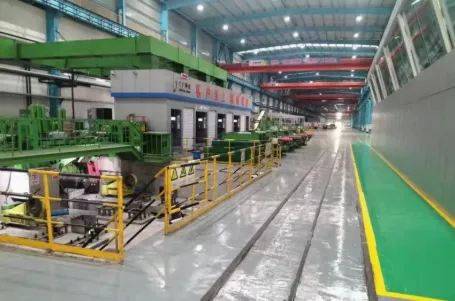
Cold Rolling in the Context of High-Strength Steel Demand
The global demand for high-strength steel has surged across industries such as automotive, aerospace, and construction, driven by the need for lightweight yet durable materials. Cold rolling, a critical metal-forming process, plays a pivotal role in meeting these demands by enhancing the mechanical properties and surface finish of steel. Manufacturers rely on advanced стан холодной прокатки technologies—including 2 hi cold rolling mill, 4 hi cold rolling mill, и 6 hi cold rolling mill configurations—to produce high-precision steel sheets and strips. This article explores how cold rolling mill manufacturers are innovating to meet the growing market for high-strength steel, the advantages of different mill types, and the diverse applications of cold rolling mill products.

The Role of Cold Rolling in Producing High-Strength Steel
Unlike hot rolling, which processes steel at high temperatures, cold rolling occurs at or near room temperature, resulting in superior dimensional accuracy, improved surface quality, and enhanced mechanical properties. The process involves passing steel sheets or strips through a series of rollers in a стан холодной прокатки, progressively reducing thickness while increasing strength through work hardening.
The demand for high-strength steel has pushed cold rolling mill manufacturers to develop mills capable of handling higher tensile materials while maintaining tight tolerances. The absence of scale formation—a common issue in hot rolling—ensures a smoother surface, making cold rolling mill products ideal for applications requiring both strength and aesthetic appeal, such as automotive body panels and precision machinery components.
Types of Cold Rolling Mills and Their Applications
2 Hi Cold Rolling Mill: Simplicity and Flexibility
The 2 hi cold rolling mill, featuring two opposing rolls, is one of the simplest configurations used for general-purpose rolling. While it lacks the precision of more advanced mills, its straightforward design makes it cost-effective for producing thicker gauges of steel. It is often employed in smaller-scale operations or for preliminary rolling before further processing in multi-stand mills.
4 Hi Cold Rolling Mill: Balancing Precision and Productivity
The 4 hi cold rolling mill introduces backup rolls to support the smaller work rolls, significantly improving rigidity and reducing deflection under high rolling pressures. This configuration is widely used in the production of high-strength steel sheets with tight thickness tolerances. Industries requiring consistent material properties—such as automotive manufacturers—favor 4 hi cold rolling mills for their ability to maintain uniform strip flatness and surface quality.
6 Hi Cold Rolling Mill: Advanced Control for Ultra-Thin Gauges
For ultra-thin, high-strength steel strips, the 6 hi cold rolling mill offers superior control over rolling forces and strip shape. With intermediate rolls in addition to work and backup rolls, this mill type minimizes edge drop and improves thickness consistency. The 6 hi cold rolling mill is particularly valuable in producing advanced high-strength steel (AHSS) grades used in electric vehicle batteries and aerospace components, where precision is non-negotiable.
Innovations by Cold Rolling Mill Manufacturers
To meet the rising demand for high-strength steel, cold rolling mill manufacturers are integrating advanced technologies such as:
Automated gauge control (AGC) for real-time thickness adjustments.
Shape control systems to eliminate defects like edge waves and center buckles.
High-speed rolling capabilities to enhance productivity without compromising quality.
Additionally, manufacturers are optimizing mill designs to accommodate harder steel alloys, ensuring that cold rolling mill products meet stringent industry standards.
Cold Rolling Mill Products and Their Industrial Applications
The versatility of cold rolling allows for the production of a wide range of cold rolling mill products, including:
High-strength steel sheets for automotive chassis and safety components.
Precision strips for electronic enclosures and medical devices.
Corrosion-resistant coated steel for construction and appliances.
As industries continue to prioritize lightweighting and durability, the demand for these cold rolling mill products is expected to grow, further driving innovation in mill technology.
The increasing need for high-strength steel has cemented cold rolling as a vital industrial process. Whether through a 2 hi cold rolling mill for basic applications or a sophisticated 6 hi cold rolling mill for ultra-precise strips, manufacturers are continuously advancing their capabilities. Cold rolling mill manufacturers play a crucial role in this evolution, ensuring that cold rolling mill products meet the exacting standards of modern industries. As material science progresses and new steel alloys emerge, cold rolling will remain indispensable in shaping the future of high-performance metals.
-
Indian Clients Visit YWLX to Inspect Skin-pass MillНовостиJun.22,2025
-
Typical Products from Reversing Cold Rolling ProcessНовостиMay.26,2025
-
Surface Finish Improvement through Skin Pass RollingНовостиMay.26,2025
-
Integration of AGC Systems in Modern Cold Rolling MillsНовостиMay.26,2025
-
AGC in Hot Rolling Mills: Challenges and SolutionsНовостиMay.26,2025
-
Why Reversing Cold Rolling Mills Are Ideal for Specialty MetalsНовостиMay.13,2025
-
The Pivotal Position of Hot Rolling Mills in the Iron and Steel Industry ChainНовостиMay.13,2025










